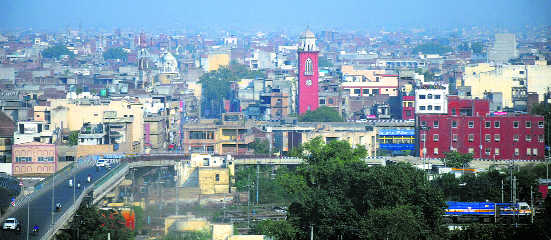People’s patience being tested in Punjab civic polls
Rachna Khaira in jalandhar & Minna Zutshi in Ludhiana
Municipal polls are not really meant to judge political parties’ popularity. In Punjab, where some of the civic bodies are due for polling on Dec 17, the high stakes involve party politics and the ownership of cash-rich civic bodies. Though residents’ grievances remain unending in the midst of administrative inaction, the approach to sorting them out does reflect the way a party functions in or out of power. The Tribune takes up two most significant municipal bodies in Ludhiana and Jalandhar to gauge the mood of the people as well as local representatives.
Stuck in Ludhiana
Though the delimitation exercise is on to ascertain the number of wards, Ludhiana civic body is among the richest in Punjab. Yet the Ludhiana Municipal Corporation (LMC) is not the most efficient. Ludhiana is the Smart City in the making, but is struggling to get access to basic civic amenities. Garbage dumps dot the city, despite the assiduously carried-out Swachhta Abhiyaan exercises. In summers and monsoons, residents of some city areas remain deprived of potable water. Water-borne diseases and dengue break out with seasonal regularity and the official machinery wakes up only when the city is in a crisis.
The air quality is way below the permissible safety limits. The Buddha Nullah remains the toxic vein of Ludhiana. Encroachments are a familiar sight in the city where buildings byelaws are violated with impunity.
Col JS Brar, president of NGO Maha Sabha Ludhiana that has been pursuing cases against encroachments in the city, says he has a proof of the irregularities in the working of the civic body. “The democratic system has come to such a pass that people feel helpless,” says Col Brar.
“Management has been a problem. It will take time to streamline all things,” says former Congress councillor Mamta Ashu. “The LMC, from the last six-seven years, is no longer the richest civic body,” she says.
Politicizing development makes the public suffer for no fault of theirs. Credit wars among the councillors/MLAs are common, says Brij Bhushan Goyal, a retired banker and organizing secretary of the Mahatma Gandhi Peace Mission. Development works get caught in the tug-of-war between rival political parties.
Caught in politics
Jalandhar: With the third largest municipal body in Punjab, Jalandhar has seen rollercoaster ride to development since the SAD-BJP regime took over in 2007. A major reason affecting the city’s development was the lack of coordination between the coalition partners.
All this happened when solid waste management posed the biggest challenge. The city generates over 500 metric tons of garbage generated every day. With the lone garbage dump at Wariana village swelled to over four times its capacity, the MCJ even took to ‘flushing out garbage in ponds of nearby villages last year, but was soon told by villagers to get out. Though the MCJ had introduced a project of the Jindal group, the company was not allowed to work by the sanitation workers union having a strong voter base and enjoying political patronage.
As a result, the city’s National Swach Bharat ranking slipped from 28 to 234 in just a year. A road sweeping project, undertaken at a cost of Rs 9,7000 per km of a stretch, drew severe criticism.
Despite that, Jalandhar made it to the list of ‘smart cities’ in 2016. But the project is yet to take off. The plan to develop it as a sports hub remains a distant dream.
City’s former mayor Sunil Jyoti says he had inherited a loan of over Rs 100 crore in 2007. “I left the MCJ with a surplus of over Rs 12 crore, excluding an additional income of another Rs 12 crore from the GST,” he said. But actual figures differ. As of today, the MCJ has a liability of Rs 45 crore as claimed by municipal commissioner-cum administrator Dr. Basant Garg who took over after the last general house completed its tenure in September. “Since MC is not a profitable organization, we do not have surplus money at any time,” says Dr Garg.
City highlights
Ludhiana
159.37 sq km
is the city spread
16 lakh
is the population
95
is the number of wards
(delimitation is on)
Jalandhar
110 sq km
is the city area
12 lakh
is Jalandhar’s population
80
is the number wards
(after delimitation)









